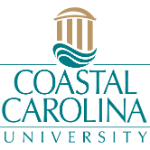Below is a summary of the abstract you submitted. Presenting author(s) is shown in bold.
If any changes need to be made, you can modify the abstract or change the authors.
You can also download a .docx version of this abstract.
If there are any problems, please email Dan at dar78@pitt.edu and he'll take care of them!
This abstract was last modified on March 15, 2022 at 9:40 p.m..

The global population of bacteriophages is vast and numerous phages have been discovered and their genomes annotated by SEA-PHAGE participants. This has led to functional assignment of many genes by bioinformatic analysis. However, the function and biological significance of many genes has not been determined because they lack sequence similarity with known genes or have not been subjected to wet-bench analysis. We are assessing a biological role genes in the P5 cluster phage Phayonce by generating a library of each Phayonce gene inserted in into an inducible plasmid vector. Each gene in the library will be used in downstream cytotoxic assay experiments to determine whether the encoded protein has deleterious effects on the host bacterium M. smegmatis. First, each gene is amplified by PCR using gene specific primers. Then, purified amplification products are assembled into the plasmid vector pExTra. Finally, each generated construct is verified using universal primers. We have successfully generated and verified pExTra plasmids that contain genes 76 and 77 of Phayonce and are using these constructs in the cytotoxic assay. Our results will contribute toward determining biological activity of the vast number of unique genes present in the diverse bacteriophage population.
